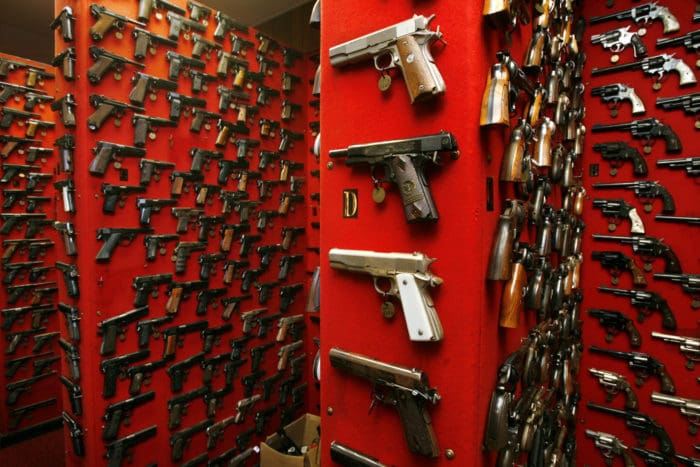By Tim Carroll
What gun should I carry for self-defense? That’s a question that’s been asked more times than I can count during my professional training career and more often in recent years. The answer is, well…complicated.
1. Stopping Power
First we need to look at one of the most important aspects of carrying a handgun for self-defense, the ability to stop a threat. Statistics will show that a handgun round is a relatively poor choice for stopping an attacker. If I told you that we were going to get into a gunfight at a particular time and place, we would probably both choose rifles. A rifle is a much better option to stop a threat.
On average, it takes three to four hits with a handgun caliber round to stop a bad guy. Notice I said hits, not shots. Odds are, no matter how good you think you are, you’re going to miss somewhere between 50% and 100% of the shots you take in a stressful defensive gun use situation.
So now let’s do some math. If it takes three to four hits and I miss half my shots, that means I’ll have to shoot six to eight times just to stop one threat.
What if I’m facing more than one threat? You can see how ammunition capacity becomes a very important part of “stopping power” when making the choice on what handgun to buy and carry.
2. Caliber
This particular point has been argued over for decades and those arguments are going to continue for decades more. The fact, however, is this; when it comes to duty calibers, it doesn’t really matter.
That’s right, from .380 ACP all the way up to .45 ACP, using good, modern defensive ammunition, the caliber doesn’t matter. It still takes about the same number of hits to stop a threat regardless of the calibers mentioned above.
Personally, I’m choosing the firearm that I can carry that has the most capacity. I suggest you do the same.
3. External Safety
Plenty of folks are still hung up on external safeties. They’re not confident enough in their skills to carry without one. The fact is, with a lot of newer model handguns, at external safety is there for one reason…to make people feel good.
If you want an external safety, that’s OK. Just be sure to train properly — and often — when using it. During my classes, with inexperienced students, I’ve seen far too many forget to take the safety off and put the safety on. When they try to draw and fire under the minimal stress of the training environment, they get silence, then look at the gun and realize it’s because their handgun’s safety is still engaged.
I’m not saying that external safeties are a bad thing. But y need to be able to use it without thinking, automatically, and all of the same firearm safety discipline still needs to be observed. You can’t use an external safety like a crutch.
4. The Right Fit
How are you going to carry your gun? Inside the waistband? Outside the waistband? In a purse or backpack? All of those decisions will affect your choice of handgun.
If you’re unfamiliar with the different types of carry, I strongly suggest getting some in-person training to see how you feel about and perform with each one. You have to be able to quickly deploy your firearm when you need it so being familiar and comfortable with your carry method is critical.
How does the gun fit your hand? That has to factor heavily into your choice, too. You can’t choose a firearm for someone else and they can’t choose one for you.
You have to see if a gun fits your hand, if you can rack the slide, how the trigger press feels. Rent any gun you’re thinking of buying if you can to see if you can handle the recoil, load its magazines, and perform all the routine manipulations. Most importantly, it has to be your choice.
All of these factors and more will go into choosing the right handgun for you to carry and you need to consider each one carefully. A handgun is a life-saving defensive tool. It needs to be safe and reliable and you need to be able to use it effectively. Low cost shouldn’t be the driving factor. No one goes into the parachute store and says, “Give me the cheapest one you got.” That’ not a good strategy for a carry gun, either.
Tim Carroll is head instructor at Tennessee-Carry.com.
